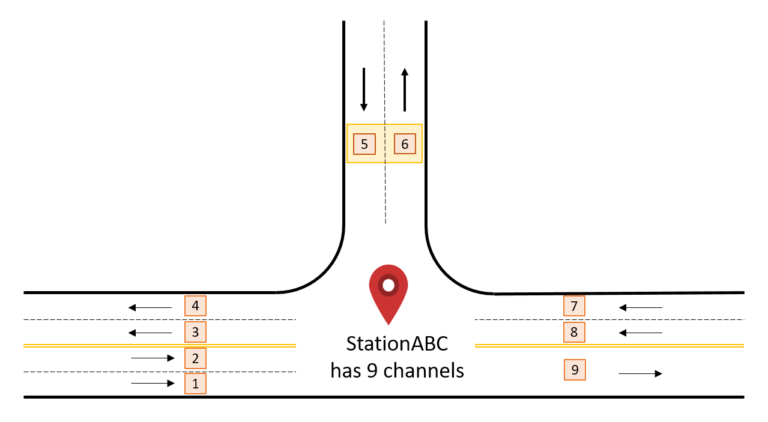About The Station
A counting station represents how and where a count was taken. A station could describe how a machine or person has performed the count.
A station will have at least one channel. Each count tally record or observation is related to a channel.
For motorized traffic, a channel is typically a roadway lane. For non-motorized vehicles (bicycles and pedestrians), a channel can be a sidewalk, a crossing or similar.
There are three important header record types that define a station:
- SC: The channel definition record is used to declare channel IDs, direction of travel, and what the counted objects are moving on. Each count tally or observation is related to a channel.
- SL: The station label is used to provide additional descriptive information about the station, for use in charts and tables.
- SE: The equipment label is used to provide additional information about the machine performing a count.
A station has a
station ID. The format leaves the meaning of the station ID open to users of the data. For count data stored in a file this is found in the
file name. If count data is not contained in a file there is an optional
SI header record. The station ID must satisfy several format rules:
- ASCII alphanumeric text (0-9, A-Z, a-z)
- No white space such as spaces or tabs
- No underscores (you may use hyphens)
- No commas, semicolons, colons, plus signs, etc
- Case is normally ignored

Station Channels and Labels
SL station,0,description,Example Station Record
SL station,0,regionname,Some County
SL direction,1,pathname,North Rd
SL direction,3,pathname,East St
SL direction,7,pathname,West St
SC 1,3,1,-1,7,1,-1
SC 2,31,1,-1,7,2,-1
SC 3,7,2,-1,3,1,-1
SC 4,7,1,-1,3,1,-1
SC 5,73,1,-1,1,1,-1
SC 6,1,1,-1,73,1,-1
SC 7,17,1,-1,3,1,-1
SC 8,7,2,-1,3,1,-1
SC 9,3,1,-1,71,1,-1
TD off